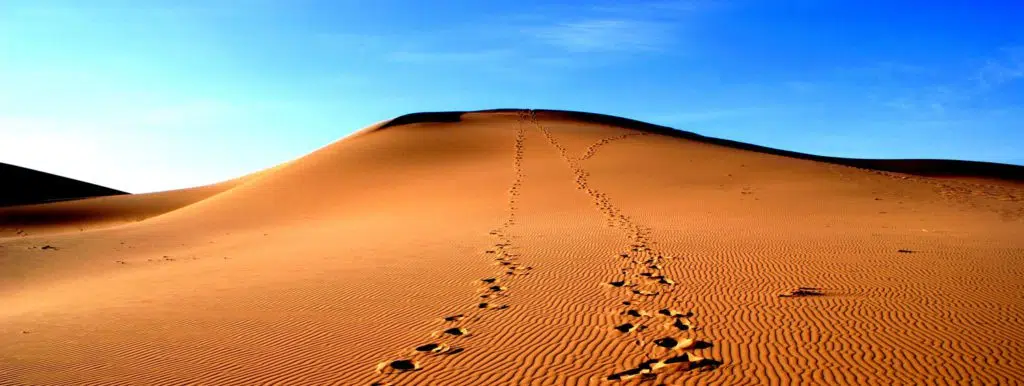Gobi: Changing the Perceptions of the Desert
It’s not often you hear the word Gobi without the word desert attached: the image of a barren, lifeless place of endless billowing sand dunes is firmly affixed to the term desert in the mind of the general public. Deserts, however, can be varied in landscape, and frequently contain many ecologically diverse pockets. For Mongolians, govi—from which the word Gobi is derived—is defined as the geographic zone between steppe and desert, and the Gobi encompasses it all: steppe, govi, and desert.
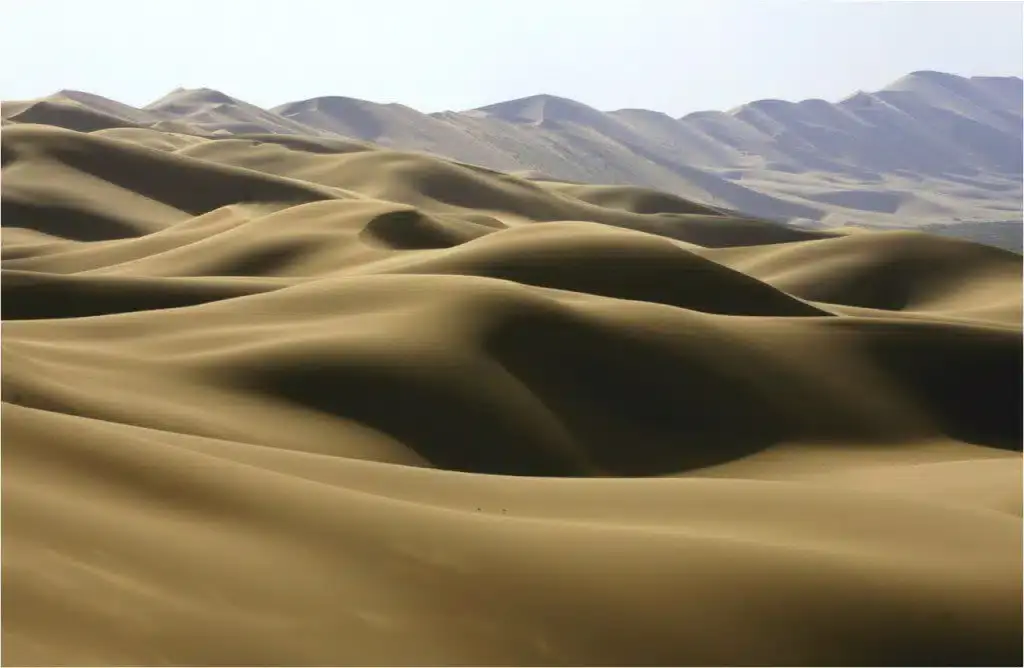
Hongoryn Els: the Gobi’s tallest sand dunes
The Gobi encompasses some 1,295,000 km2 (500,002 sq mi)[1], making it the largest desert in Asia and the fifth largest in the world. It covers parts of northern and northwestern China and southern Mongolia, crossing the Govi-Altai, Bayankhongor, Zavkhan, Uvs, Dundgovi, Dornogovi, and Umnugovi aimags (provinces) of Mongolia. In academic literature, five distinct eco-regions are considered to exist within the Gobi: the Eastern Gobi desert steppe (Inner Mongolian Plateau to Mongolia), the Alashan Plateau semi-desert (south-southwest of the Eastern Gobi), the Gobi Lakes Valley desert steppe (between Altai and Khangai mountains), the Dzungarian Basin semi-desert (between the Altai mountains and Tian Shan range), and the Tian Shan range (between the Dzungarian Basin and Taklamakan Desert to the west). However, believe it or not, Mongolians recognize around 369 named goviud (multiple govi), which are grouped into 33 main goviud—pockets of distinct desert sub-regions within the larger Gobi that are partially separated from one another by chains of low mountains and hills.
Prominent landforms include sand hills and dunes, dry mountain slopes, gravelly steppes, rocky hills, saxaul forests, dry riverbeds, and more.
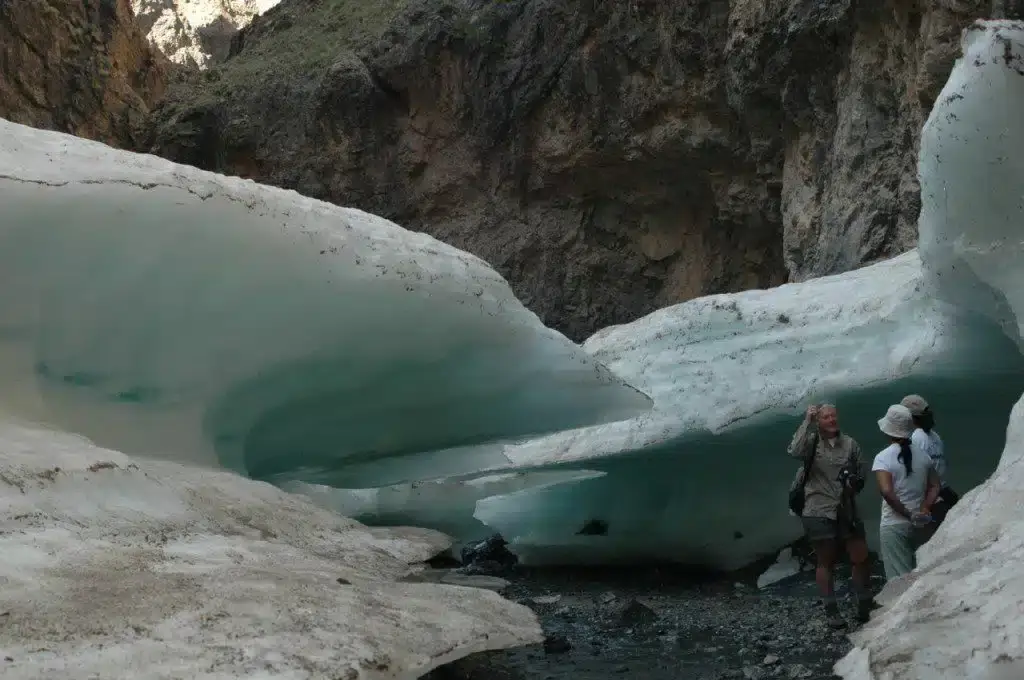 Ice formations at Yol Valley
Ice formations at Yol ValleySituated to the north and high up around 1500m above sea level, the Gobi is a cold desert with extreme weather conditions. The temperatures as you tour Mongolia can change as much as 17°C within a day. Winters are cold and summers are hot. The little precipitation (roughly 7.6 in. annually), most of which falls in winter, can shower down all in a single day! Although the Great Wall was designated as the physical boundary between Mongolia and China, the true, invisible boundary is the difference in precipitation that gives China a more productive climate and makes most of Mongolia an arid desert.
Wildlife
To the inexperienced eye, the Gobi can give off an air of vastness or emptiness, offering nothing but the horizon grounding you under the sky. The richness of life here, however, is as unique as any other ecosystem, and it takes just a small amount of rain for the environment to spring to life: wild onions, Goyo plants, cacti, creosote bushes, thorn acacias, saxaul trees, annual flowers, rabbit brush, ocotillo, sage brush, insects, lizards, rodents, tarantulas, scorpions, snakes, hawks, and black-tailed gazelles dot the landscape, to name just a few.
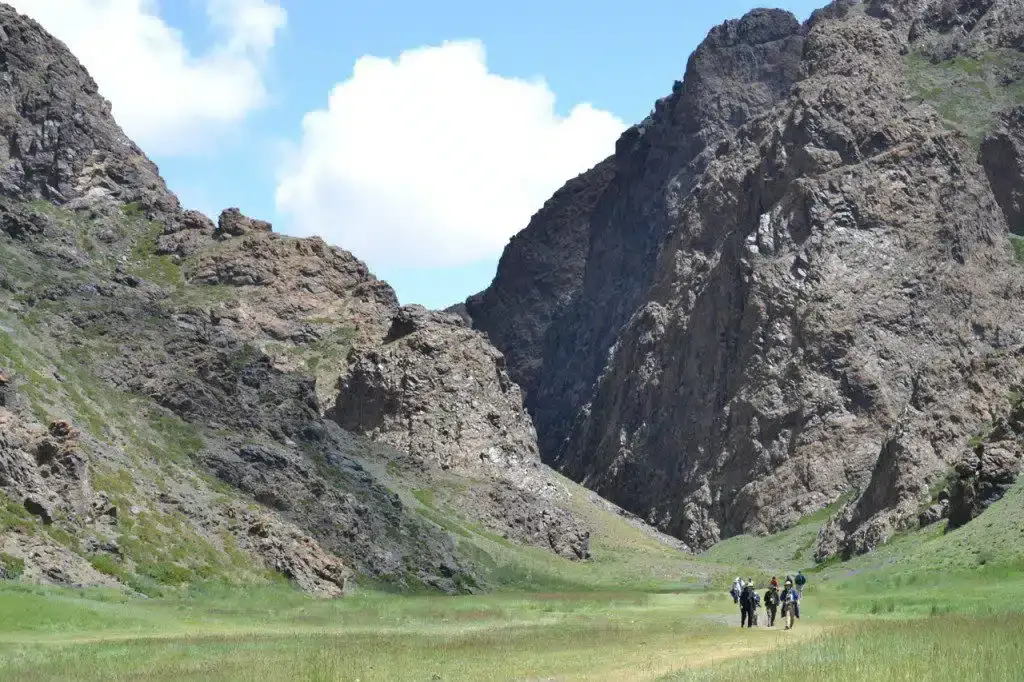
The green Yol Valley in the foothills of the Gobi Altai Mountains
Gobi Bear
Where the Gobi is concerned, the Gobi bear species cannot go unmentioned. A remnant population of desert-dwelling Gobi bears, or mazaalai, as locals refer to them, inhabits the isolated oases along the southern portion of the Great Gobi Strictly Protected Area (GGSPA). The mazaalai is probably one of the least-studied and most endangered of the brown bear species (Ursus arctos ssp.), its existence having been confirmed only in 1943 during an expedition of the Science Committee of the Mongolian Peoples’ Republic. According to an article published in National Geographic Special Features (April 2014), there are fewer than two to three dozen remaining in the wild. The only exclusively desert-dwelling bear population, Gobi bears are relatively small with adults weighing only 100 to 120 kg; they are bronze brown, with the head, belly, and legs tending toward a darker tone than the rest of the body. Though the taxonomic distinction is disputed as it was based on morphological characteristics, in 1992, Sokolov and Orlov grouped mazaalai as the distinct subspecies Ursus arctos gobiensis.
“Bears are a kind of umbrella species. You save them, you save big chunks of habitat that benefit the rest of the wild community,”[2] says Harry Reynolds, an authority on Gobi bears. Indeed, the Gobi harbors a variety of wild species now endemic and exclusive to the area, having been extirpated from other areas: the Mongolian wild ass (Equus hemionus hemionus), also called khulan in Mongolia; the famous mountain-dwelling snow leopard (Uncia uncia) that venture into the Govi-Altai mountains during winters, and the only true, wild, double-humped Bactrian camels.
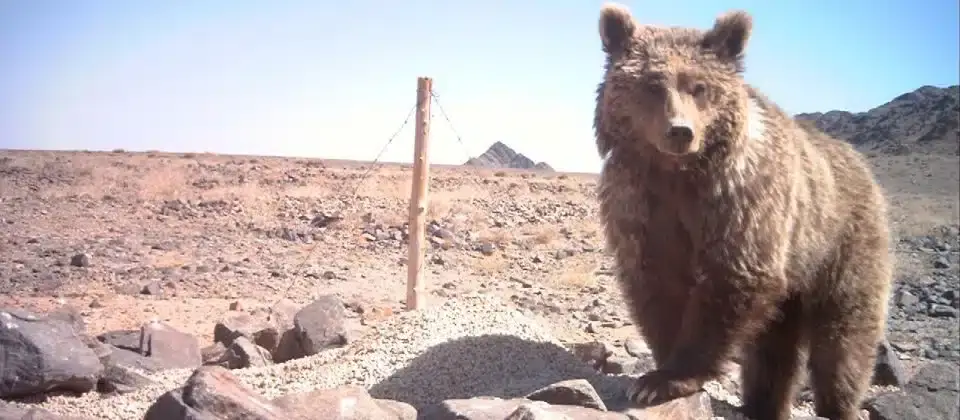 Mazaalai. Photo: The Mazaalai Foundation
Mazaalai. Photo: The Mazaalai FoundationA Fossil Hunter’s Paradise
The Gobi is also a desert for paleontologists. Mongolia was thrust into zoological fame when, in the early 1920s, Dr. Roy Chapman Andrews—the suspected real-life model for Indiana Jones—led four historically astonishing expeditions into the region. Their principal mission for the expeditions was paleontological, and beside many vertebrate fossils, the group was the first in the world to discover nests of dinosaur eggs.
Today, the Gobi is still as Andrews described it in the thrilling records from his adventures—vast, mostly uninhabited landscapes—a paradise for (legal) fossil hunters and explorers alike, and as diverse and surprising in its terrain as any other region of the world.
Plan Your Visit to the Gobi Desert
The surreal magnificence of the Gobi Desert is difficult to describe, that’s why they say seeing is believing. Contact our travel experts and we will help you arrange a trip to appreciate the Flaming Cliffs and the surrounding attractions.
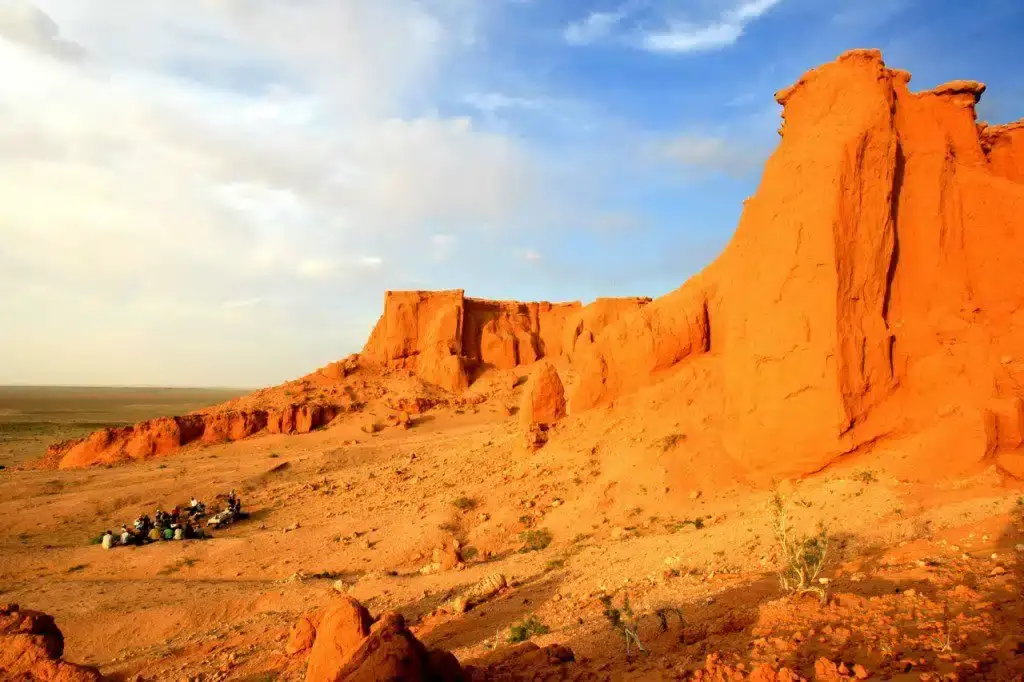 The Flaming Cliffs, discovered by Dr. Roy Chapman Andrews in 1923
The Flaming Cliffs, discovered by Dr. Roy Chapman Andrews in 1923
This post was constructed by independent blogger Setsen Altan-Ochir.

